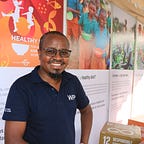Growing food anywhere
WFP tries out Hydroponics in Kakuma camps
WFP is piloting hydroponics technology in Kakuma refugee camp and Kalobeyei settlement in the arid Turkana County, Northern Kenya.
This is a method of growing plants in a water based, nutrient rich solution. The testing of this cultivation technique that does not use any soil will run for six months (December 2018 — May 2019). It will target families with micro-nutrient deficiencies, for instance the youth affected by scurvy in Kakuma, female and child-headed homes, as well as farmers drawn from both the host and refugee communities in Kalobeyei in support of self-reliance.
In Kakuma, one demo hydroponic unit has been set up using both horizontal and vertical systems. These include: capillary, net-tubes, grow-tubes, hydro mats and hydro crates.
Boosting nutrition
The project particularly targets South Sudanese youth who were affected by scurvy in March 2018. Scurvy is primarily associated with a lack of vitamin C. Most of the affected youth are male aged between 13 and 22 years old who live and cook together, suggesting a common deficiency in their diet.
‘’I am very pleased with this project. The vegetables we have planted will give us an additional source of nutrients,” said 18-year old Maru Turich Ador who had scurvy last year. “We usually just eat the food given to us like sorghum and peas — and with the Bamba Chakula cash, we get mainly beans and wheat flour. On rare occasions, we buy cassava leaves.’’
With guidance from the United Nations World Food Programme, the Turkana County Government and other partners, the youth in Kakuma have chosen to plant spinach, kales, a variety of traditional vegetables, capsicum, cowpeas and tomatoes.
Reaping the rewards
The first harvest from this unit is expected in mid-February 2019. Encouraging the consumption of vegetables is expected to offer a longer-term solution to diet-related ailments especially among the youth who prefer high energy but less nutritious foods.
The youth will also stand a chance to make an income from the sale of the extra vegetables. In total, WFP expects to directly reach about 800 people with the pilot scheme through additional hydroponics units.
Participating families will receive practical training on setting up different planting systems, establishing seedlings nurseries, mixing nutrient solution, watering methods and frequency as well as pest and diseases identification and control.
If successful, this project has the potential of increasing agricultural activities in the camps leading to increased access to fresh vegetables and produce at affordable prices. The current fresh produce that is consumed in Kakuma and Kalobeyei is mostly ferried from Kitale, 400 kilometres away, and from as far as Uganda and Tanzania.
The main challenge facing this pilot is finding a sustainable source of water for agriculture. While WFP’s hydroponics pilot is using material sourced from elsewhere in the country, the goal is to eventually identify local materials that can be used for the construction of the structures and for the ‘inert’ (the material on which the crops grow in lieu of soil) in a bid to keep the cost affordable and for ease of replication.
Currently, the pilot is using a mix of coco peat — husks from coconuts — pumice, and volcanic rocks to grow the crops, while the containers (tubes and crates) are manufactured elsewhere.
Overall, the pilot will help WFP and other partners understand the viability, cost, and the limitations of hydroponics and the potential for large scale replication in the most cost-efficient manner.
In Kakuma , the youth are already seeing different crops flourish at the hydroponic unit and have developed a very keen interest on the technology.
“This project will be very helpful to us. We know it will help tackle the disease we had — and this is why we are very keen on participating,’’ said 22-year old Madiny Gum, one of the youth working on the hydroponics trial in Kakuma.
WFP’s hydroponics pilot is funded by Australia, Germany and Japan.
